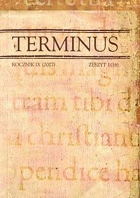Ksiądz Stanisław Orzechowski i swawolne dziewczęta wobec opon Zygmunta Augusta na Wawelu
Rev. Stanisław Orzechowski and Wanton Girls. Looking at Flemish Renaissance Tapestries in Kraków
Author(s): Marcin Fabiański Subject(s): Language and Literature Studies
Published by: Wydawnictwo Uniwersytetu Jagiellońskiego
Keywords: Stanisław Orzechowski; Renaissance Tapestries; Kraków; Wawel
Summary/Abstract: For the marriage of King Sigismund Augustus of Poland to Catherine of Austria in 1553 the halls of the royal Wawel Castle were adorned with a set of Flamish tapestries. The decoration was immediately described by rev. Stanisław Orzechowski in his Nuptial Panegyric. Due to several factors he could not see the figural tapestries well enough, so not all the details in his ekphrasis could be accurate. However, he rallied his vast classical erudition and imitated (in fact emulated) a number of ancient sources, in particular the Tablet of Cebes. The material, workmanship and realism of the arrasses were praised lavishly. The author’s visual culture was probably based on his selective knowledge of classical literature. Even though Orzechowski admitted that the nude First Parents depicted there aroused wanton members of the public, all the Eden scenes provided the royal couple with beneficial moral teachings. To account for this paradox, a vast number of ancient, early Christian and Renaissance literary sources is studied here in an attempt to find such an interpretation that would turn the alluring nudes to the moral benefit of the beholders. The justification could be found in the doctrine best expressed by St. Augustin in his City of God. The impeccable nudes of Adam and Eve set before the bride and groom an ideal example of innocent marital feelings. According to Andrzej Frycz Modrzewski, a secretary to the king, lascivious scenes could thus become “the material to exercise virtue”.
Journal: TERMINUS
- Issue Year: 13/2011
- Issue No: 24
- Page Range: 41-69
- Page Count: 29
- Language: Polish

